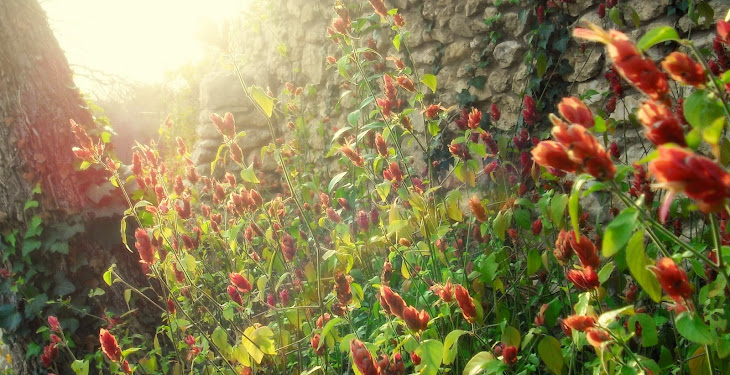This blog post is just for you, Paige. :) It's all about our "septic system", or better yet, our lack of one.
As previously mentioned, we have no improvements on our land- no buildings, no water or electricity (although these will be done soon!), and no septic system. So what do we do? How do we "powder our noses"? (Love that euphemism, Tamara!) How do we shower? Here's how it works:
We use a composting toilet. Yes, that's right, a toilet that composts. How do we do that? Well, take a five gallon bucket, stick a toilet seat on top, get some sawdust, and you magically have an ecologically responsible way to take a dump. You see, as long as you get the carbon-nitrogen ratio correct (that is, sawdust-crap ratio), all your excrement will, over time, turn into lovely compost that can be used to fertilize your soil. Not only will we be giving back to the land, we won't be flushing gallons of clean, drinkable water down the toilet every time we powder our noses. After the five gallon bucket is full, we empty it into a special, just-for-the-composting-toilet compost pile (kitchen scraps, etc go into a different compost pile that will later be used for gardens). A composting toilet compost pile needs to age longer than a regular compost pile to make sure all nasty bugs are destroyed, about 2 years (this is variable depending on how you do things). Compost from this compost pile will be used to fertilize trees, flowers, etc, but not the vegetable garden, just to be on the safe side (although many veteran "humanure" composters don't feel the need to differentiate between their two kinds of compost- point being, it's perfectly safe to use on your vegetable garden IF done properly- but that stigma is still there, and guests may not want to eat your salad after they see your powder room and reality hits them!). To sum it up, a composting toilet system is perfectly safe for the environment IF carefully and responsibly handled. It is not only perfectly safe, but it gives back to the environment in fertilizer and also saves many many gallons of clean water from being wasted in the toilet. You get the idea.
Next, the "gray water"- aka, shower water, dish water, etc. We collect all of our gray water in a holding tank and then use it to irrigate. As you can surely understand, our gray water will only be polluted if we put pollutants in it. Sooo, we use all natural and bio-degradable soaps, shampoos, cleaners, etc. We don't pour anything down the sink that we're not comfortable pouring directly onto the soil- no chemicals, no toxins, etc. By doing this we are able to recycle all of our water- it's all used twice, because first we use it to shower, do dishes, etc, and then the same water is used to water the field or trees, etc.
I imagine that there are still plenty of you who are slightly freaked out by this idea, especially if you've never heard of composting toilets before. You may be concerned that we are polluting our land... but let me assure you that no one cares for our 40 acres more than we do, and we want to be as responsible as we can possibly be in every decision about our home. After quite a bit of reading and research we are definitely convinced that composting humanure is the most ecologically responsible thing for us to do.
So there is your answer Paige! To learn more, read this awesome book, "The Humanure Handbook". It has answers to your every question! (About composting toilets, that is ;)
ETA: No, the composting toilet doesn't stink... at all. I promise! Yay carbon-nitrogen fixation!
Thursday, April 15, 2010
Subscribe to:
Post Comments (Atom)


3 comments:
Nice! Haha, I guess my inquiring mind was being a little aggressive--just HOW are you accomplishing all that?
Dan and I have talked a lot about grey water systems as well, and we've seriously thought about having two septic "systems" (Dan's a little leery of the composting toilet idea for his own home, but thinks it's a very sweet idea in general--Back to Basics is a wonderful book!), one for grey water from the house sinks, shower, and washer, and another for the particularly private drains, haha.
I'll have to do some reading! Do you all think you'll get a more "scientific" composting toilet when you build your yurt? Or still go the simplest-is-best route?
So inquiring minds went looking and found your link. I also googled "Humanure" and Joseph Jenkins (the author) has a website with 1st-3rd editions of his book available COMPLETE and FREE online!
Additionally, there are lots of pictures and videos of ideas, plans, and examples by other people who have tried the same thing. Very intersting!
Here's the link to his website!
http://www.jenkinspublishing.com/humanure.html
And the complete 3rd edition.
http://humanurehandbook.com/downloads/Humanure_Handbook_all.pdf
Thanks for sharing!
that's awesome about the book! I will have to edit my blog and link to it.
I think we're going to stick with our current and simple 5-gallon bucket method, even when we build the yurt. It's just too easy, really.
Post a Comment